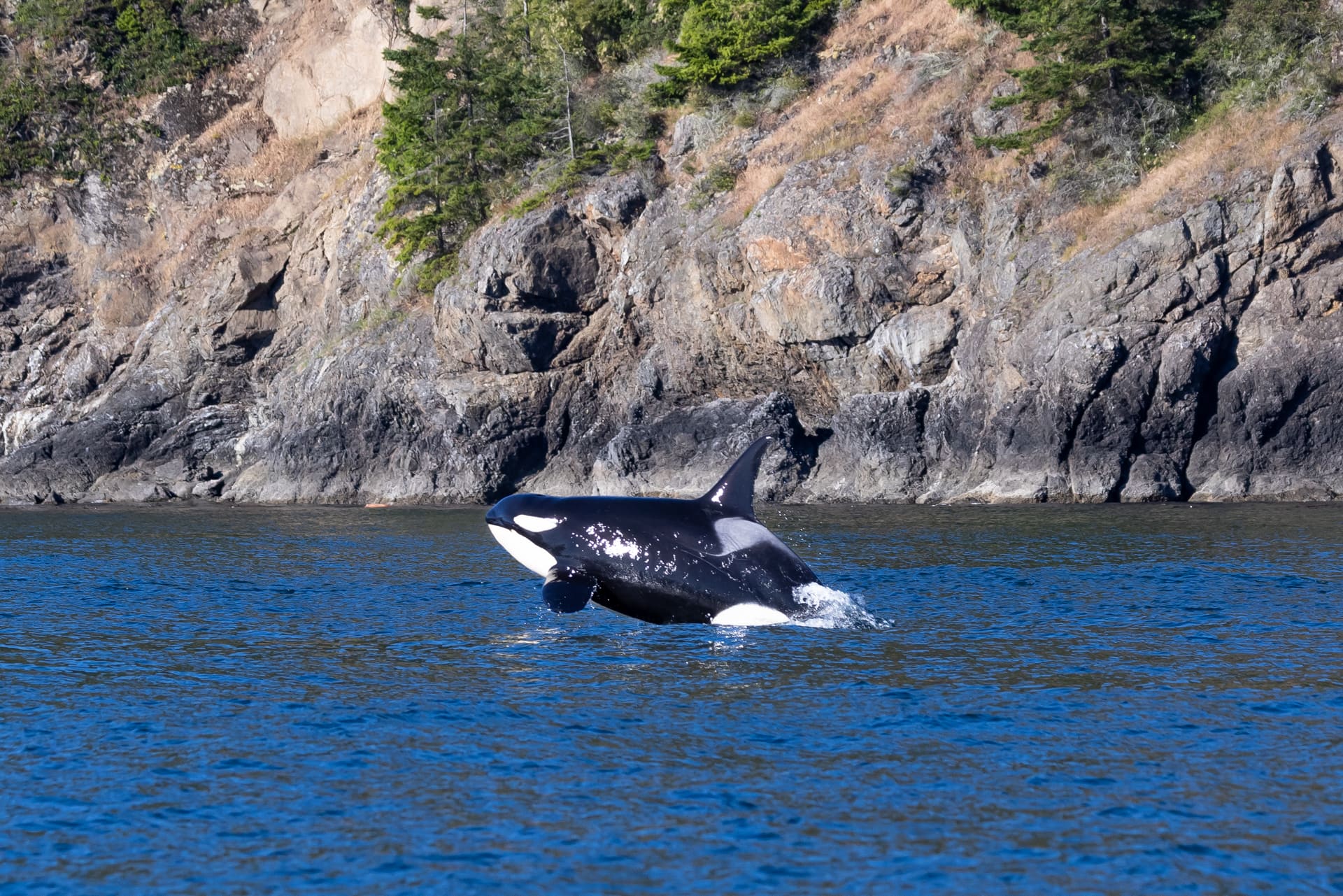
Our biological age may differ from our chronological age as our cells and tissues age at different rates, influenced by external factors such as health and lifestyle. To determine the Southern Resident killer whales’ biological age, scientists evaluated age-related changes in their DNA to compare with their recorded age.
NOAA’s new study may help to estimate the ages of other at-risk cetacean populations with less known histories. Could it also reveal signs of premature aging in this endangered killer whale population?

Southern Resident killer whales in September of 2023.
What was the study?
Scientists discovered that it’s possible to estimate the biological age of mammals by tracking chemical changes in DNA due to a process known as “methylation.” According to the National Human Genome Research Institute, this is “a chemical modification of DNA. When found in DNA, methylation can alter gene expression.” Genes are instructions in DNA for making proteins, and methylation could result in increased or decreased protein production, which may affect aging. Scientists can measure these changes in blood, skin cells, saliva, and other tissue samples.
NOAA scientists had access to tissue samples from 118 known killer whales aged 0 to 75 years. They narrowed these to a subset with a 90% confidence in the chronological age—leaving 131 biological samples. These included skin cells collected using dart biopsy methods from live whales and other tissue samples collected from stranded animals post-mortem.
What did they find?
They found some consistency between the whales’ known chronological and their estimated biological ages, primarily when the whales were known to be under 20 years old. In contrast, in animals aged over 40, there were more discrepancies. However, since the research started in 1976 and the ages of adults alive at that time had to be estimated, this could account for some variability.
They found it was necessary to calculate the biological ages of males and females separately; otherwise, the model underestimated the age of females. This indicates, as previously found in humans, that these killer whale females age more slowly than males.
They also found discrepancies with some of the oldest known females in the Southern Resident killer whale population. Here, the biological age suggested they were younger than researchers had estimated. This included J2, Granny, who famously died in 2016, perhaps aged as old as 105.
However, studies in humans aged over 100 years have found they also can have “younger” biological ages, suggesting that this methodology is limited in accuracy for these rare individuals with an exceptional lifespan.
Before using these findings to calculate the age of other cetaceans, including other killer whale populations, these scientists indicated that it’s necessary to understand whether different prey types, i.e., mammals vs. fish, make a difference as “factors including environmental stressors and dietary preferences” are known to trigger age-related DNA changes—as do hormones and stress.
So we must ask, does prey scarcity in a polluted environment wind forward the biological clock of the endangered Southern Resident killer whales? In recent years, several mature males have failed to reach age 35, and postmenopausal females are dying in their 50s. Yet according to this study, the lifespan of these whales is estimated at 50 for males and 80 or 90 for females.
In fact, studies show that the lack of Chinook salmon and high contaminant and noise pollution levels compromise the nervous and immune systems of this endangered population, resulting in disease and early death, including 69% of unborn calves.
Continued below...
Indeed, in humans, it has been found that when age-related changes to DNA result in a biological age higher than an individual’s chronological age, “this constantly predicted an earlier death,” according to a UCLA study.
Currently, grandmother whales live much shorter lives than J2 Granny’s generation. Yet they’re fundamental to their pods’ social structure and the survival of adult sons, and their daughter’s calves. We must act swiftly to redress the actions preventing these whales from living equally long lives. Quite simply, inaction is a death sentence.





